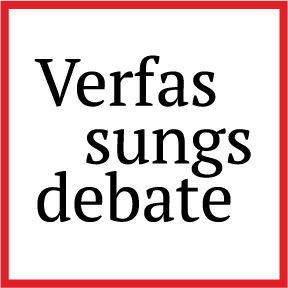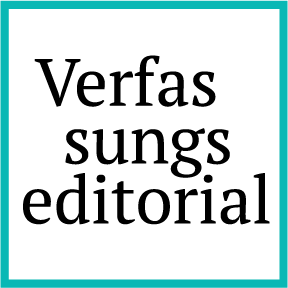The International Law of Meat Trade
Agro-exceptionalism Repurposed
In the course of his ongoing trade war against the rest of the world, US President Trump announced the imposition a base tariff of 35 or even 39 % on all Swiss products imported into the USA. In order to persuade the US to lower this tariff, Swiss politicians and diplomats briefly contemplated liberalising the importation of US beef (which is currently levied with a Swiss tariff of 22 Swiss Francs per kilo and which is also generally produced under worse animal welfare conditions than Swiss beef).
The Swiss farmers’ lobby was quickly able to brush this idea off the negotiating table. This incident demonstrates the powerful position of the agricultural sector. If the farmers want it, they can prevent the import of meat. The argument of this blog post is that agricultural exceptionalism and the concomitant protectionism should be upheld and maybe even strengthened in the meat sector, by relying on animal welfare arguments, because the international trade in meat, and the law promoting it, is bad for animals.
Facts and figures on the international meat trade
Animals, their bodies, their parts and all results of their metabolic labour are fully coded into the law as property, as commodities. The global trade in meat and meat products in 2024 amounted to 42.5 million tonnes and has increased by 4.7 % since 2023 (FAO 2025, 2). In absolute figures, the growth of the global meat trade in the last decade (from 2014 to 2024) amounted to an increase of 10 million tonnes of carcass weight per year (it rose from 30.5 to 42.5 million tonnes annually) (FAO Food Outlook October 2015, 46).
The continuous growth of the global meat trade is, inter alia, driven by a rising demand for meat. The worldwide consumption of meat has more than doubled in the past 20 years, not only due to the increase of the global human population but also due to the “meatification” of human diets. Each year (in the annual average of 2017 to 2019), the average person ate 68.6 kg of meat in developed countries and 26.6 kg in developing countries (Meat Atlas 2021, 12).
At the same time, the international trade in meat not only parallels the growth of production but is even growing more steeply. For example, in the 1960s, less than 4 % of worldwide beef production was traded across borders, while in 2021 it was almost 20 % (Meat Atlas 2021, 14). One reason for this disproportionate increase of international meat trade is the establishment of transnational supply chains: sperm – insemination – giving birth – rearing and fattening – slaughter – food processing – sale: all these stages of meat production and consumption are more and more dispersed across state boundaries and take place in different countries, even different continents.
The internationalisation of trade harms animals even more
The increase of international trade, not only in meat but also in live animals and in feed for them, has an inbuilt tendency to harm animals. First and obviously, more trade builds on more meat production, and this means more animal suffering. Moreover, the market share of low-standard countries is rising. The two largest meat-exporting countries are Brazil and the United States. These two lead exporters are expected to contribute to two-thirds of the predicted increase in global meat exports over the projection period (2022-2031) (OECD-FAO Agricultural Outlook 2022-2031 (2022) 201). Given that the overall animal welfare standards, especially regarding livestock, are rather low in the US and in Brazil compared to other jurisdictions (Animal Protection Index), their increased exports will augment the number of animals suffering and slaughtered for international sales.
Second, those states which cultivate high (potentially costly) animal welfare standards for livestock must cope with the pressure of global competition. The prize pressure encourages a concentration of meat production in larger plants and also an outmigration to jurisdictions with lower animal welfare standards. Moreover, legislators, in order to forestall the drying out of their meat sector (be it through outmigration or shutdowns), are generally tempted not to raise domestic animal welfare standards (“regulatory chill”). This might even set in motion a downwards spiral (“race to the bottom”).
Third, the liberalisation of trade in feed grain has promoted the transcontinental trade of soybeans and maize (e.g., from Latin America to Europe and Asia) and thereby facilitates factory farming. Fourth, specifically the concentration of the slaughter industry means longer transport routes for live animals with mostly extremely poor welfare conditions. The figures are staggering. In the four-year period between 2017 and 2021, an average of around 1.350 billion live animals were transported inside the EU, and more than 212 million live animals were transported from the EU to third states, while 11 million entered the EU (European Court of Auditors 2023, 8-9).
The law makes it worse, too
International trade law (the agreements under the umbrella of the World Trade Organization (WTO) and bilateral and regional trade agreements) is not neutral towards these trends but exacerbates them. Its raison d’être is to enable and promote trade. The problem of legal design is that all non-trade regulatory objectives are relegated to the realm of exception and can only stand when specifically justified. Moreover, animal welfare is not even mentioned as a legitimate regulatory objective/exception.
From the perspective of international trade law, basically any national animal welfare measure (for example, labelling requirements on dolphin-friendly tuna meat) is seen as a potential trade barrier. Animal welfare arguments by actors such as the European Union (EU) are viewed with hostility, especially by states from the global south. In order to combat protectionism under the guise of animal welfare, trade agreements generally demand that unilateral measures fulfil certain requirements: they must pursue a legitimate aim and must be applied in a non-discriminatory manner and avoid disguised restrictions on trade. So while international trade law does not absolutely foreclose unilateral animal welfare measures (which are in tension with the policy objective of liberalising trade), it does place a burden of justification on the acting states, which risk being sued before the relevant bodies of international trade agreements.
Despite this risk, countries have occasionally banned meat imports, mainly out of concern for food safety and human health. Famously, the EU prohibited the import of beef from the US containing hormones (WTO Panel 1997; Appellate Body 1998). Indonesia sought to restrict the import of Brazilian chicken meat and chicken products that were certified halal. The objective was to protect consumers against contamination with salmonella (Panel 2017). Russia banned the import of live pigs and pig products because it feared the infection of pigs in Russia with the African swine fever (Panel 2016; Appellate Body 2017). In all three WTO disputes, the prohibitionist states lost their case. More troubling even, the animal welfare problems of the meat production were not discussed at all.
The legal barriers erected by international trade law tend to stymie animal welfare policies. States might, in good faith, fear to violate international trade law. They also use the international trade regimes as a scapegoat for not promoting animal welfare domestically. This happened in Switzerland with foie gras, a cruelty meat product which, after discussion in Parliament, has not been prohibited. The argument was that a market ban might violate WTO law.
System-conforming legal strategies for improving animal welfare in the context of the meat trade
Staying inside the pro-free trade paradigm, states could do much more for mitigating the nefarious effects of the international meat trade and the law that promotes it.
First, they could aggressively invoke the written exceptions in international trade agreements, especially “animal health” (e.g., Art. XX lit. b) GATT; Art 2(2) of the TBT Agreement, and the entire SPS Agreement) or “public morals” (e.g., in Art. XX lit. a) GATT) and could interpret them broadly to cover animal welfare concerns. However, states have generally shied away from doing this in the context of the meat trade.
The EU relied on “public morals” only for banning seal products, which was about their fur, and moreover not about a large trade volume of an everyday consumption good such as beef or pork. The European stance was criticised by Inuit groups who deplored the cultural prejudice against the cruel seal hunt and who pointed to double standards in protecting seal (on the Arctic ice) but not veal (in the European slaughterhouses). Since the Seal Products case (2013–2014), no state has activated the public morals clause to ban or restrict the importation of meat derived from countries with lower standards. The explanation is probably that, in no country of the world, do we hear a public outcry against cruel meat production. Slaughter for meat is normalised violence, so that a “public morals” case against slaughter cannot be made.
Second, states can tie meat trade liberalisation to conditions. EU law requires that meat may only be imported from third countries if accompanied by ‘an attestation certifying that requirements at least equivalent’ to the EU rules on standard slaughter procedures, stunning, and qualification of the personnel have been met (Art. 12 of Regulation (EC) 1099/2009). More recently, the 2023 Free Trade Agreement (FTA) between the EU and New Zealand (NZ) has exempted from the preferential tariff for beef those beef products originating from cows raised on commercial feedlots and sheep meat raised on systems other than pastoral (Annex 2-A: Tariff Elimination Schedules/ Section C: Tariff Rate Quotas of the European Union/ Clause 21(b)).
A third strategy comprises “bottom-line clauses”: in recent trade agreements of the United Kingdom (UK), the parties envisage not to encourage trade or investment by relaxing domestic animal welfare standards. They also promise not to grant waivers to foreign firms and to enforce their laws properly (Art. 6.3.(2) and (4) of the NZ─UK FTA 2022; Art. 25.1.(3) of the Australia─UK FTA 2021). In the latter, the parties even ‘endeavour to continue to improve’ their level of animal welfare protection (Art. 25.1.(4)).
Fourth, animal welfare could be reconceptualised as an integral trade objective, such as in Art. 8.1 of the EU─NZ FTA. The legal consequence of this upgrade is that animal welfare would be removed from the realm of exception and would gain the weight it deserves. However, any of these legal tools will generate animal welfare benefits only when many more states, especially the big meat exporters and importers, introduce them, which is so far not the case.
Disruption: Exempt meat and livestock from trade liberalisation
A fourth and more radical strategy would be to break free from the liberalisation of the meat and livestock trade altogether. At this juncture, the traditional agro-exceptionalism could and should be repurposed. Agro-exceptionalism is a globally widespread mind-set that considers the entire agricultural sector as too special for allowing it to be left to free trade (Moon 2011; Trebilcock and Pue 2015; Scott 2017). Rather, agriculture is seen to deserve special protection for cultural and social reasons. Agro-exceptionalism has in fact and law led to a relatively high degree of protectionism (market distortion) for agricultural products: subsidies, higher tariffs, and lack of concentration control. Because of the importance and scope of these (real or ascribed) functions, the agricultural sector has extremely high political leverage. Agro-sector lobbyists have been able to resist liberalisation and are constantly blocking reforms.
In this constellation, animal welfare could and should come in. The task of agriculture to safeguard and promote animal welfare – beyond and against the profit logic – should be placed in the foreground.
As the US−Swiss incident over beef imports shows, once farmers step into the political process, they usually win. Therefore, it is this group that must be activated in favour of animal welfare. This would include, of course, transitioning away from meat production in the first place. More modestly, exemptions from trade liberalisation obligations for meat and meat products should be expanded.
Conclusion
The idea of limiting global trade in meat and livestock does not fit the current economic and legal paradigm of global capitalism, because it is assumed that any trade limitation will be harmful for humans. Moreover, the rampant protectionism of fruit, vegetables, and grain for human consumption by actors such as the EU and the USA is a deep unfairness of the world trade system for states of the global south. These markets should be more liberalised in order to give a fair chance to southern products. But meat is a different matter. Here the unfairness of the international meat trade towards the animals themselves is the biggest one of all.
On the way towards the utopia of taking animals out of the market logic altogether by assigning them a different legal status, not as tradeable things with a market price tag but as inherently valuable living beings, the shift-of-focus of the existing agricultural exceptionalism in international trade law would be one small step. It would work against the steep increase of the international meat trade and would thereby improve animal welfare at some places on the globe.



